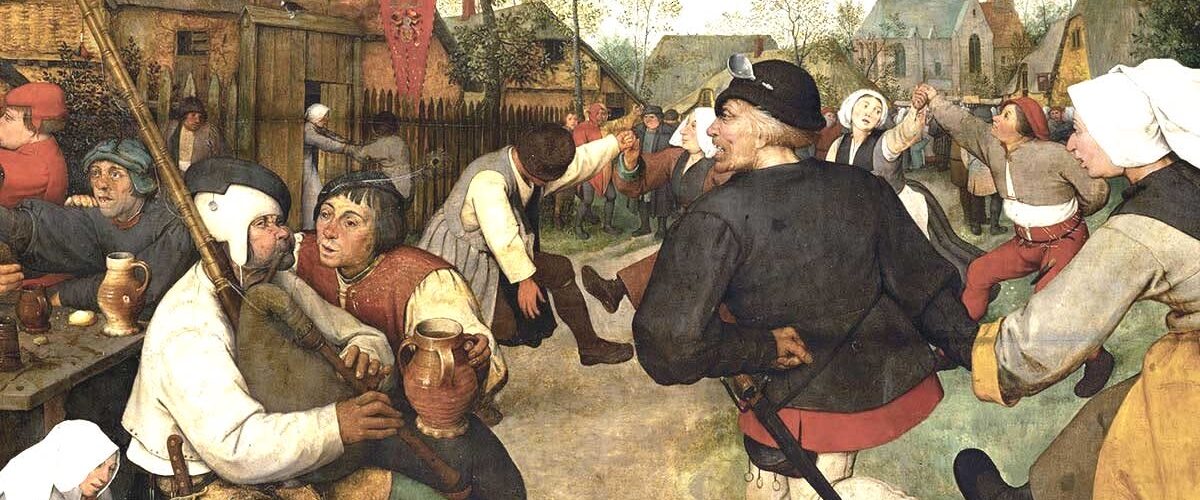The Dancing Plague of 1518 – A Historical Enigma

The dancing plague of 1518, or dance epidemic of 1518 (French: Épidémie dansante de 1518), was a case of dancing mania that occurred in Strasbourg, Alsace (modern-day France), in the Holy Roman Empire from July 1518 to September 1518. Somewhere between 50 and 400 people took to dancing for weeks. There are many theories behind the phenomenon, the most popular being stress-induced mass hysteria, suggested by John Waller. Other theories include ergot and religious explanations. There is controversy concerning the number of deaths.
The History
The outbreak began in July 1518 when a woman called Frau Troffea began to dance fervently in a street in Strasbourg. Troffea kept up the constant dancing for a week. Soon, three dozen others joined in. By August, the “dancing plague” had claimed 400 victims. Dancers were beginning to collapse. It is said some even died from a stroke or heart attack. No one knew what caused this reaction, which meant no one understood how to remedy it. By early September, the outbreak began to subside, when the dancers were sent to a mountain shrine to pray for absolution.
Controversy exists over whether people ultimately danced to their deaths. Some sources claim that for a period the plague killed around fifteen people per day, but the sources of the city of Strasbourg at the time of the events did not mention the number of deaths, or even if there were fatalities. There do not appear to be any sources related to the events that make note of any fatalities. Ned Pennant-Rea also claims that the final death toll is not known, but if the claims of fifteen people dying per day were true then the toll could be “into the hundreds.”
The main source for the claim is John Waller, who has written several journal articles on the subject and the book A Time to Dance, a Time to Die: The Extraordinary Story of the Dancing Plague of 1518. The sources cited by Waller that mention deaths were all from later accounts of the events. There is also uncertainty around the identity of the initial dancer (either an unnamed woman or “Frau Troffea”) and the number of dancers involved (somewhere between 50 and 400). Of the six chronicle accounts, four support Lady Troffea as the first dancer.
Medical and Religious Interpretations
In an attempt to understand and stop the dancing, local authorities sought the help of physicians, who attributed the phenomenon to “hot blood.” Religious leaders also became involved, considering it a divine punishment or a manifestation of Saint Vitus, the patron saint of dancers. Attempts to alleviate the condition included constructing a stage and hiring musicians to encourage the dancing.
The Unexplained Mystery
The Dancing Plague of 1518 remains an enigma. Various theories have been proposed to explain the phenomenon, including ergot poisoning from contaminated rye bread, stress-induced hysteria, and mass psychogenic illness. However, none of these theories provide a definitive explanation for the widespread and persistent nature of the dancing.
Resolution and Aftermath
The strange episode gradually waned, and by September 1518, the dancing had largely ceased. The surviving dancers were left exhausted and traumatized. The event faded into history, leaving behind a legacy of fascination and curiosity.
Historical Significance
The Dancing Plague of 1518 continues to captivate historians, psychologists, and scholars. It serves as a perplexing case study in the realm of mass hysteria and psychosocial phenomena. The lack of a conclusive explanation adds to its mystique, prompting ongoing speculation and debate.
While the Dancing Plague remains an unsolved mystery, it stands as a testament to the unpredictable nature of historical events and the ways in which human behavior can confound even the most rational explanations. The echoes of those frenzied dances in the streets of Strasbourg centuries ago still resonate as a reminder of the complexity of the human mind and the enduring allure of historical puzzles.
Modern theories
Food Poisoning
Some believe the dancing could have been brought on by food poisoning caused by the toxic and psychoactive chemical products of ergot fungi (ergotism), which grows commonly on grains (such as rye) used for baking bread. Ergotamine is the main psychoactive product of ergot fungi; it is structurally related to the drug lysergic acid diethylamide (LSD-25) and is the substance from which LSD-25 was originally synthesized. The same fungus has also been implicated in other major historical anomalies, including the Salem witch trials.
Stress-Induced Mass Hysteria
This could have been an example of fully developed cases of psychogenic movement disorder happening in mass hysteria or mass psychogenic illness, which involves many individuals suddenly exhibiting the same bizarre behavior. The behavior spreads rapidly and broadly in an epidemic pattern. This kind of comportment could have been caused by elevated levels of psychological stress, caused by the ruthless years (even by the rough standards of the early modern period) the people of Alsace were suffering.
Waller speculates that the dancing was “stress-induced psychosis” on a mass level, since the region where the people danced was riddled with starvation and disease, and the inhabitants tended to be superstitious. Seven other cases of dancing plague were reported in the same region during the medieval era.








